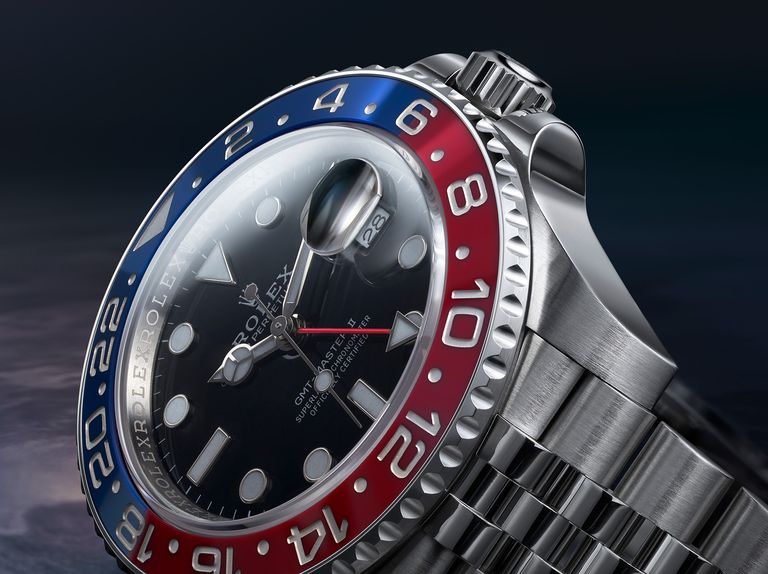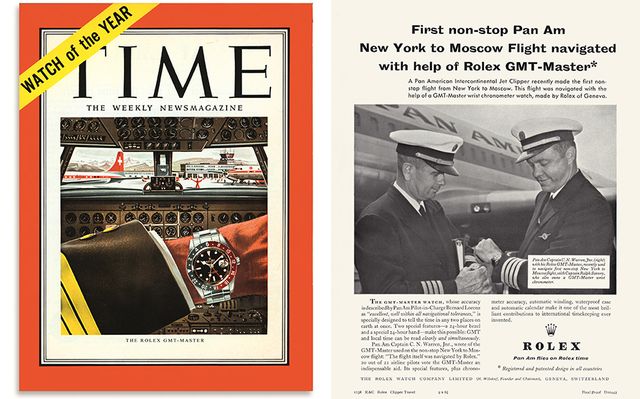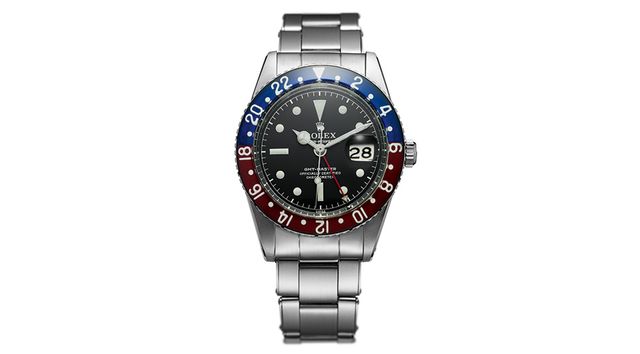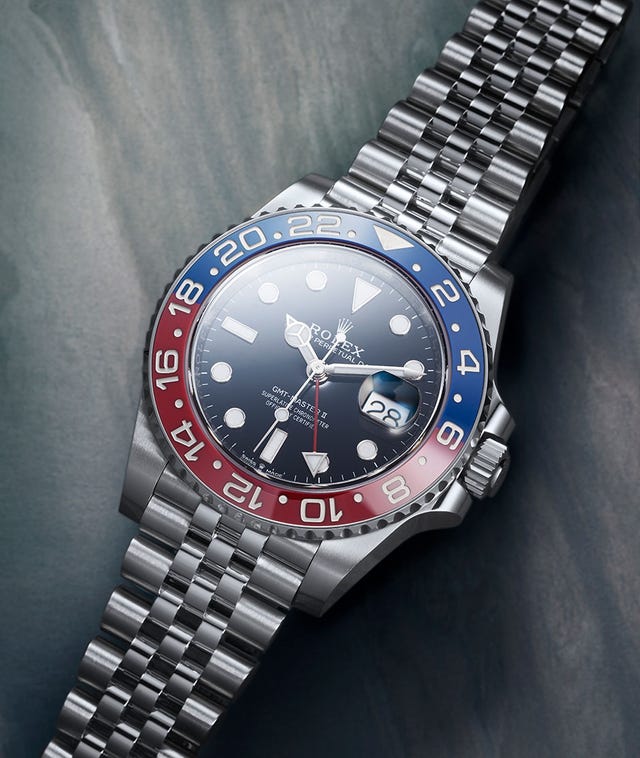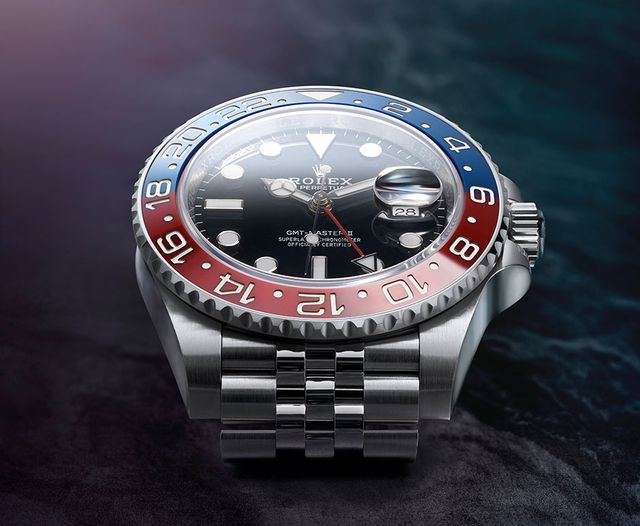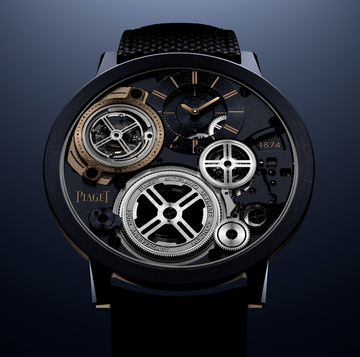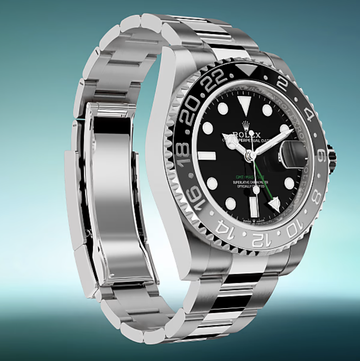You may or may not know that it was at the International Meridian Conference of 1884 held in Washington D.C. that the world was officially divided into 24 time zones, and the Greenwich Meridian – which we British had been using to calculate time for decades – came to be internationally recognised as the site of Greenwich Mean Time, with each 15 degree zone east or west of the meridian being decreed as representing one hour of time ahead or behind respectively.
By the 1930s, genius horologist Louis Cottier had created a wristwatch-sized version of the world time mechanism (most famously used by Patek Philippe) that showed the correct time in 24 different zones simultaneously.
One might have expected Cottier or someone else to have soon devised a simpler mechanism for people who only really cared what time it was in two places but surprisingly it was to be another 20 years before a watch company created just such a watch that was simple, accurate and easy to use. That company wasn’t just any old dial name, but the mighty Rolex that had been approached by Pan-American Airlines during preparations for the first intercontinental jet passenger flights by Boeing 707.
While the dawn of the jet age promised to make the world a smaller place, it also introduced an unexpected phenomenon in the form of so-called ‘jet lag’ whereby the speed of travel made it difficult for the human body to adjust to the comparatively sudden time zone changes between the home continent and that of the destination.
Most people these days are familiar with jet lag but, back in the ‘50s, a method of combating it was still being sought – not least since pilots seemed no less prone to its effects than passengers.
So prior to putting the new 707 into full service, Pan Am asked Rolex to develop a wristwatch that would let its wearer tell the time at a glance in both the ‘home’ and ‘destination’ time zones, partly in the slightly naive belief that being able to see both times simultaneously would trick the mind into not noticing the hours that had been lost or gained.
Working with several of the airline’s most experienced pilots, Rolex created the GMT-Master (for Greenwich Mean Time) Reference 6542 in 1954, featuring a version of the rotatable bezel first seen on a production Rolex in the Turn-O-Graph of the previous year. (Less well-known is that the Glycine Airman, launched a year ahead of the GMT-Master in 1953, used a 24-hour dial and rotating 24-hour bezel, without a GMT hand, to address the same problem.)
In the case of the GMT-Master, however, the bezel was calibrated into 24 hours and designed to be used in conjunction with a fourth hand – the 24-hour hand – which was coloured red to make it instantly identifiable.
The rotatable bezel was made from steel with a Plexiglass insert, one half of which was coloured blue to represent night and the other half red to represent day. It was a simple matter to set the 24-hour hand so that it showed the time at destination on the bezel, leaving the main hour hand on ‘home’ time. Many Pan-Am pilots, first officers and navigators were issued with the original GMT-Master, but its combination of functionality and good looks led to it being adopted by an increasingly well-travelled public.
That famous red and blue ‘Pepsi’ bezel remained synonymous with the GMT-Master for decades, from the almost mythical, white dial ‘Albino’ 6542 to the slightly larger reference 1675 of 1959, disappearing only with the introduction of the GMT-Master II (Reference 16760) in 1982 that made the GMT system even easier to use because the main hour hand could now be adjusted in ‘jumping’ one hour increments.
The watch also had a thicker case that inspired the ‘Fat Lady’ soubriquet, a sapphire crystal instead of the previous acrylic, new white gold hour markers and notably a new black and red aluminium insert bezel (inevitably nicknamed the ‘Coca-Cola’).
An improved movement followed in 1986, while the GMT-Master II’s case was significantly upgraded in 1990 with the use of 904L steel, while the 50th anniversary of the model in 2005 produced celebratory versions in yellow gold with a ceramic bezel and a distinctive Rolex green dial, and steel with a black ceramic bezel and green GMT hand.
The ceramic ‘Cerachrom’ bezel was one of many improvements that were made to the watch in the typical gradual and considered Rolex way (the Parachrom shock resistant hairspring also arrived in 2005), but while it was sharper, crisper and decidedly tougher than what had gone before, it seemingly marked an end to the famous red and blue of the ‘Pepsi’ because no one had worked out how to make the new component in two colours.
An eventual technological breakthrough, however, led to the 2013 launch of the black and blue bezel GMT-Master II – quickly nicknamed the ‘Batman’ – which Rolex followed the following year with the news that, lo and behold, it had discovered how to create a Cerachrom Pepsi bezel after all.
Unfortunately for many GMT fans, the new Pepsi was only made available in white gold – a decision some considered bizarre for a model that has long been regarded as a quintessential tool watch, but one that was justified by the claimed difficulty of making the large quantities of bi-colour bezels that would be required for a viable steel version. Cynics might say, however, that the idea was merely a ploy to build a longing for the watch to be available in steel for the first time since 2007 – and, as of 2018, it is.
There’s more to the watch than just a new bezel, however. The case is made from ultra hard 904L ‘Oystersteel’ and fitted with the Calibre 3285 ‘Superlative Chronometer’ movement (accurate to +/- two seconds per day), while the GMT-typical three-part-link Oyster bracelet has been substituted for the busier, five-part-link Jubilee version originally introduced on the Datejust in 1945. GMT-Masters have occasionally used the Jubilee in the past, but the suggestion is that it has been fitted to the new steel model to make it immediately distinguishable from the Oyster-equipped white gold one.
The overall impression is of a watch that combines the most technologically advanced version of the famous GMT mechanism in history with the toughest-ever case and most scratch resistant bezel – but looks less ‘tool watch’ than other models due to the dressier connotations of the Jubilee bracelet.
At £7,150, the steel, Pepsi-bezel GMT-Master II is hugely more accessible than the other version in white gold that costs £26,950 – although the irony is that the excitement surrounding its eventual arrival will probably make it harder to find.
